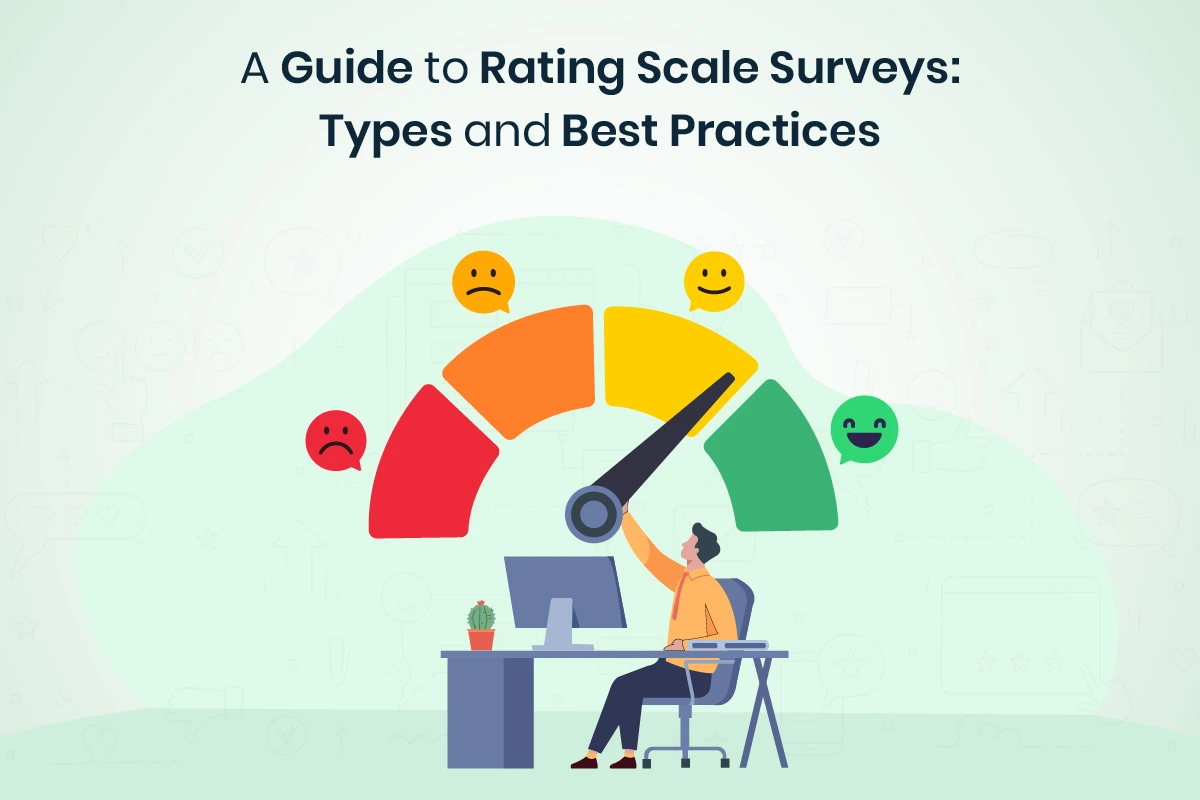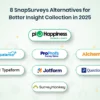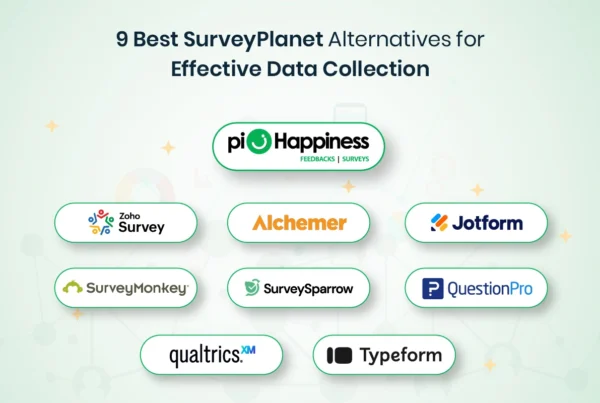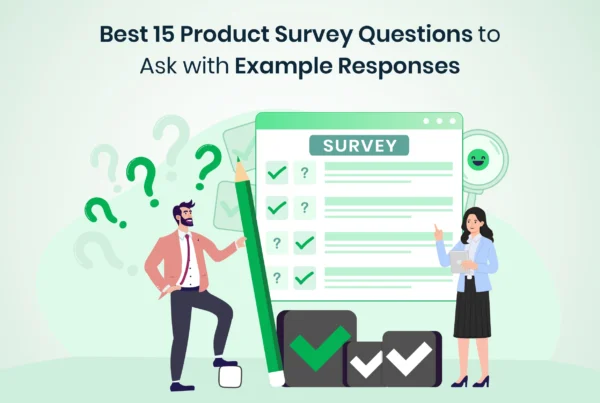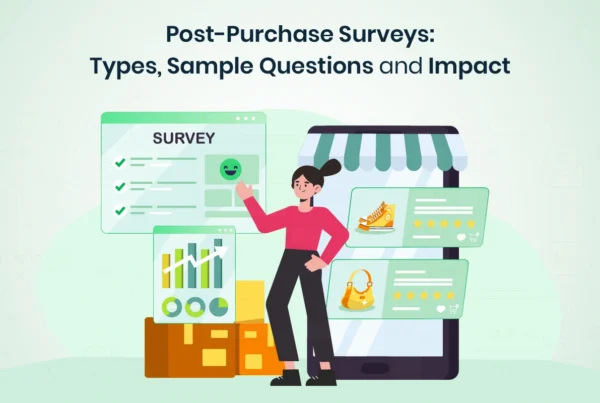Rating scale is a type of closed-ended question that enables respondents to measure a given attribute by choosing from a predetermined list of options.
For collecting structured responses, one of the most useful mechanisms is Rating Scale Surveys that assist in producing quantifiable feedback on responses. In simple words, the surveys transform subjective opinions into actionable numerical data, exposing a clear metric for improvement.
🚀 Get powerful insights with piHappiness!
✨ Try it today and boost customer happiness! 💡
One of the main strengths of rating scale surveys is their flexibility. They can be used in different situations, from assessing product satisfaction to gauging employee morale. The survey’s utility relies on thoughtful design to prevent common errors such as response bias or misinterpretation.
Why Use Rating Scales in Surveys?
Rating scales introduce convenience to feedback sets and eliminate uncertainty by providing specific framework to respondents’ leading to more consistent outcomes. Rating scales are also easy to distribute, are simple for respondents to comprehend across industries.
Whether a product review on an online website or a company-wide employee satisfaction survey, these scales provide a platform in which responses can be compared and monitored easily. The flexibility of rating scales is yet another reason for their widespread adoption.
Quick checks of customer experience to comprehensive academic research rating scales can be perfectly integrated into virtually any feedback system. Their capacity to translate perceptions into actionable measures makes them an invaluable asset among modern businesses. The rating scales can enhance the rate of responses and make data both extensive and simple to understand, if designed well.
Common Types of Rating Scales
Choosing the right rating scale is the first step in survey planning that requires critical consideration. Below are some of the most common types of rating scales surveys used for research motives.
1. Likert Scale Surveys
The Likert scale is perhaps the most familiar, applied to measure the degree of agreement or disagreement with a statement. It features a series of five to seven options, with the midpoint as neutral.
Example: The product was easy to use.
Scale Options: Strongly Agree; Agree; Neither Agree nor Disagree; Disagree; Strongly Disagree
2. Star Rating Surveys
Star rating is also a commonly used rating scale in surveys. An individual will be provided with a question, and a star symbol will be used to measure the responses. Customers are open to select 1 star to 5 depending upon their satisfaction with the product or experience they had with a service.
If a customer hands over a single star, the product or service is rated poor while a five-star rating implies an excellent experience.
Example: Please rate the quality of our product
Scale Options: 1 Star (Poor), 2 Stars (Bad), 3 Stars (Average), 4 Stars (Good), 5 Stars (Excellent)
3. NPS Surveys
Customer loyalty can be gauged by Net Promoter Score (NPS) and NPS rating scale surveys are popularly used across the globe by businesses. In this survey, businesses ask customers to rate the likeliness of recommending their product or service to their friends or colleagues.
The scale includes options from 0 to 10 where the maximum rating implies the customer is most likely to recommend while the least rating i.e, 0 means, the customer will not recommend.
Example: On a scale of 0 to 10, how likely are you to visit this restaurant again?
Scale Options: 0 (Not at all likely) to 10 (Extremely Likely).
4. Smiley Rating Surveys
Smiley face surveys or smiley rating are those where smiley faces (emojis) are used as the options for the rating scale to allow the target audiences to select the smiley with facial expressions showing the customers’ level of satisfaction or happiness with a product, service, or business.
To answer a smiley face rating scale question, the customers are offered the choice of a laughing, happy face, neutral face, sad, crying or angry face.
Example: How was our brand experience?
5. CSAT Surveys
CSAT surveys are those that are administered in an effort to gauge the customers’ satisfaction with a product, service, interaction. The customers are prompted to rate their satisfaction with their experience on 5-point rating scales on which the highest rating mark indicates highest satisfaction and the lowest rating mark represents lowest or zero satisfaction.
Example: How do you rate your experience with our product?
Scale Options: Very Dissatisfied, Dissatisfied, Neither Satisfied nor Dissatisfied, Satisfied, Very Satisfied.
6. CES Surveys
Customer Effort Score or CES surveys that businesses use to capture the perceived effort on the part of the customers to resolve their issues. Customers during a CES question are requested to assess the extent to which they agree or disagree with a statement asserting that the business assisted them sufficiently to complete their job or solve their problems.
Example: To what extent do you agree or disagree with the statement below?
Scale Options: Seven levels of ratings are available to customers to select from, which are, Strongly Agree, Agree, Somewhat Agree, Neutral, Somewhat Disagree, Disagree, and Strongly Disagree.
How to Design a Rating Scale Survey?
The quality of the survey construction determines its effectiveness. On how to design a rating scale survey, defining the objective is the first step. Are you trying to measure customer satisfaction, employee engagement, or product usability? Having a clear purpose helps to choose the sort of scale and format to be employed.
Another primary concern is wording clarity. Leading or suggestive questions mislead respondents and lower results validity. Adopt the use of straightforward wording to allow respondents to understand the question without any confusion. Also, limit the number of questions for respondent fatigue reduction, and nearest scale points to obtain an even opinion spread.
Create rating scale surveys using piHappiness
How effectively rating scale surveys will work largely depends on the platform you choose to design and its distribution. piHappiness, a leading customer feedback software offers businesses with easy-to-use templates, flexible scale formats, and automation tools that make it easy to create and push surveys.
Whether you’re measuring customer satisfaction, employee engagement, or overall service quality, piHappiness ensures your rating scale surveys provide consistent, data-driven results.
Best Practices for Designing Rating Scale Surveys
The structure of questions and scales designs and wording play a significant influence on the quality and validity of the data gathered. By following rating scale survey best practices, surveys will be user-friendly as well as scientifically reliable.
Consistency is also the key in surveys. If you are deploying a 5-point Likert scale on which 1 is ‘Very Dissatisfied’ and 5 is ‘Very Satisfied,’ maintain the same order throughout the entire survey for every question. Inconsistent scaling like reversing the positive and negative responses might produce inaccurate data.
Besides, robust and user-friendly survey software applications enable even non-technical individuals to create professional-grade surveys.
Conclusion
Rating scale surveys are a crucial building block of contemporary feedback strategies, allowing businesses to gather structured, reliable, and a wealth of data. From measuring customer satisfaction to employee engagement, these instruments offer a flexible format for capturing a broad range of perspectives.
